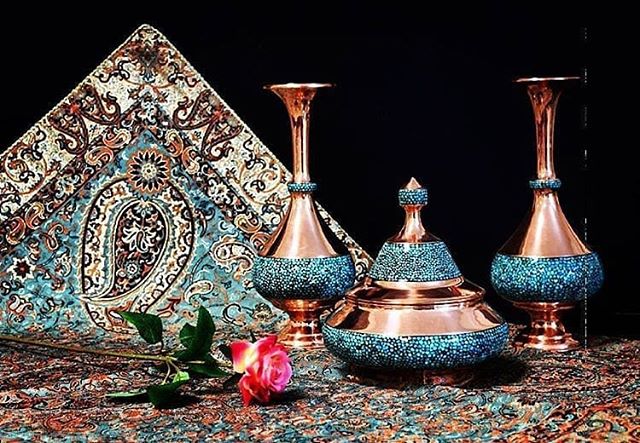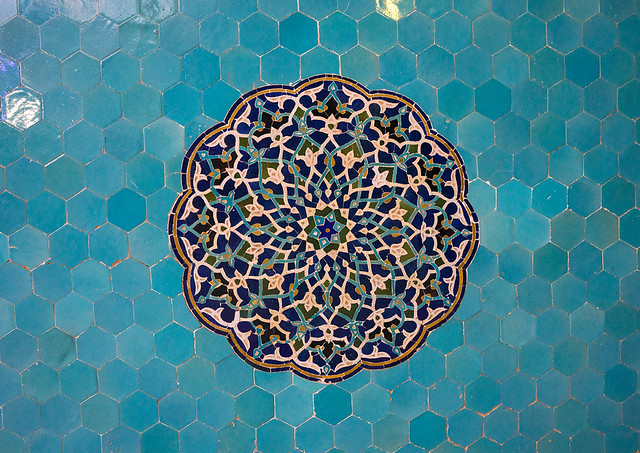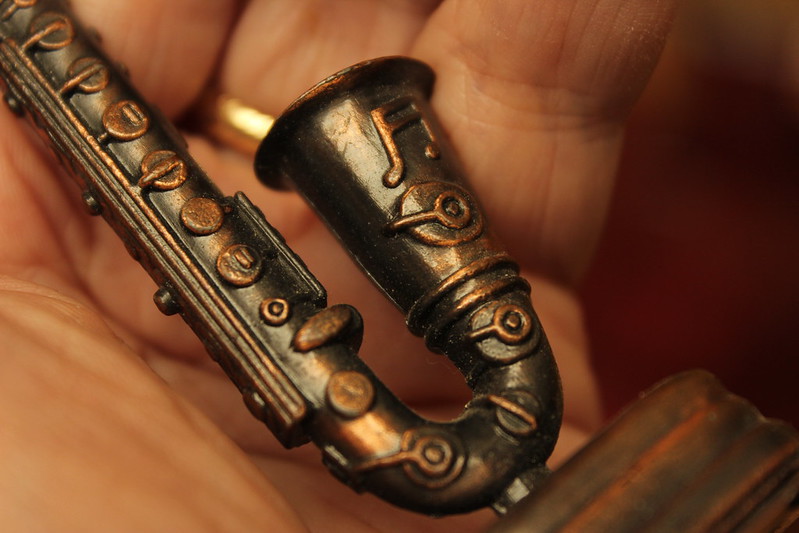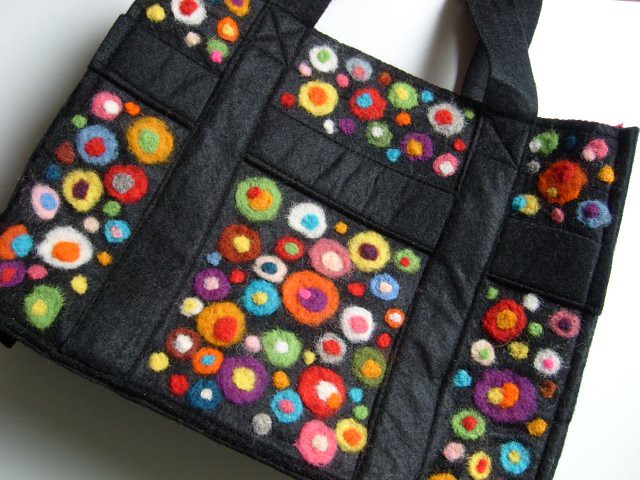Yazd handicrafts; The effect of authentic folk artistry

No one knows since when the lives of the people of Yazd have been tied to handicrafts. But historical evidence shows that these noble people have attracted the attention of the world's artistic people and craftsmen with their artistry since long ago. Among the various reasons for the tendency of the people of Yazd to handicrafts, we can point out the special geographical conditions, living conditions and being far from the center of the country. Many handicrafts of Yazd have been forgotten over the years and with the changing tastes of the people of the country and the world. Others have lost their original form with the advancement of technology. With these words, you can still watch the historical art of the people of Yazd in the markets of this city.
Introduction of Yazd handicrafts
An important part of the attractions of traveling to historical and traditional cities is visiting markets and shopping. When you travel to a city, you like to have something as a souvenir of that city. Handicrafts of any city can be a page of that country's birth certificate and whenever you look at it, you will be reminded of your travel memories.
Each city has different and unique handicrafts according to the type of climate and people's lifestyle. Handicrafts of Yazd province are thousands of years old due to its brilliant historical background.
carpet weaving

Handwoven carpet industry is the main handicraft industry of Yazd people. Yazd produces about five square meters of carpet per year for each weaver. About 50% of the handwoven carpet products of Yazd province are sold in markets outside Iran.
These carpets are woven with original patterns of Yazd carpet. The original and famous Yazdi motifs are: flower and fish, Herati, Kermani and Sardar Jangal.
Zilo weaving
Zilo is a cotton floor covering. Zillow is one of the durable and suitable flooring for desert areas. Meibod city is the main center of weaving in Yazd province. Until the last few years, hundreds of families have been engaged in Zilubafi industry. The oldest Zilvi Meibod has a very long history. This Zilo is in Jame Meybod Mosque. Zilubafi in Meibod has been attributed to the pre-Islam era.
In the past, the number of Zillow weavers was about 1,500, but today, due to the decrease in market demand, this number has decreased. The designs that are used in Zilo texture are very beautiful and remarkable. Prattore, Zelfak, Rukneh Doni, Band Rumi, Key, Eight Big Feathers and Eight Small Feathers are famous Zilo motifs in Yazd province. The dominant color in the fabric of Zilo is white, green, blue, orange and red.
The name "Naftal", which is mentioned in the market of selling carpets, is for high-quality and first-class zilos. Today, Zillow products are mostly consumed by mosques and religious institutions.
In the past, Zilo was one of the most important commercial goods in Yazd province, and most of the time it was woven after the order of individuals and merchants.
Asset weaving
Weaving property or ikat is produced using natural silk as raw material and viscose yarn with different warm and bright colors such as green, yellow, orange and red. Warm colors like purple, orange and red bring the desert mood to life. After weaving this fabric, it is cut according to the customer's needs and used. The property of Bafi is more than 800 years old and in the old days it was used to make rugs, rugs and the like. It should be mentioned that the word "ikat" is a Malay word synonymous with weaving and means twisting, tying and tying. It is interesting here that if the thread of this fabric is torn, instead of tying it, they used cotton powder and honey to stick the thread. It should be noted that in the past this fabric was considered an expensive asset and only those who had sufficient financial resources could buy this fabric.
cashew

Cashmere is a beautiful fabric that has various uses in the production of other handicrafts in Yazd province. The threads of this fabric are made of natural silk and its texture is a combination of yarn, silk, wool and wool.
In the past, cashmere was woven with the fingers of the hand, and therefore it was also known as the weaver's finger. Cashew production is now semi-manual.
There are different types of cashmere such as: Yazdi shawl, Amiri shawl, Rezai shawl, Charqadi shawl, Mahramat shawl, Bandi shawl, Atabaki shawl, striped shawl and Kashmiri shawl.
The motifs used in this fabric are Bate Jagheh, Shah Abbasi flower and deer horn.
The cashmere industry in Iran is about 500 years old. Zoroastrians are the first ones who used cashmere for clothing for special occasions.
night tent
In the city of Yazd, Ardakan and Zarch, hand-woven fabrics called Chadorshab are produced. The night tent is a colorful fabric with checkered designs. The material of this fabric is cotton or silk and it is woven in two types. One type of it is thin and is known as a bed tent, and the other type, which is thicker, is called a desert tent. The desert night tent is mostly used to carry agricultural products and has a striped design. Tents are mostly produced in 90 x 90 dimensions. In some cases, they can also be used as a table.
zari bafi
Zari weaving, which dates back to the Achaemenid period, is called the weaving of fabrics that are very delicate and precious. The thread of this fabric is made of pure silk and its wefts are colored silk and gulabton thread.
In the past, these fabrics were used to decorate the Sultan's palace and it was one of the most exquisite Iranian textiles. About 2000 years ago, Iran's silk products were famous among the people of Asia and Europe, and the best gold fabrics in the world were woven by the hands of Iranian artists.
candlestick weaving
Shamd is a kind of thin fabric that is mostly used as a blanket in summer. This fabric is often in bright colors and simple checkered or striped designs. It is made of cotton or synthetic silk.
pottery and ceramics
The first man-made industry from clay was pottery. An art that is more than 8000 years old and has always attracted the attention of the people of the world since its beginning.
The most important center of pottery and ceramics in Yazd province is Meibod city. The people of Yazd call clay products "kuare". Due to the fact that clay resources are found in abundance in this province, the production of ceramic and earthenware has been particularly prosperous in all periods. Domestic and foreign markets demand these beautiful and traditional dishes. Although the motifs on the pottery are very diverse, the motifs of the chicken, the fish and the female sun are among the main motifs of this ancient art.
Weaving
Weaving is the art of rural women of Yazd province. Giweh is a type of summer footwear that lasts a long time and can be used for long walks. The material of the giweh is made of cotton thread and after weaving, they are sewn into a part called bed.
Tile making

In the art of tile making, Yazdis use traditional and authentic Iranian designs and produce beautiful tiles that have a special effect in the architecture of buildings. This art in Yazd is about 700 years old. The artists of the tile industry prepare the desired shapes and then paint, glaze and bake the design on the tile. The types of Yazdi tiles are: help tile, Yazdi tile, hexagonal tile, grid tile, border tile, seven-color tile, joke tile and lasso tile.
Etching

Engraving different patterns on metal objects such as copper, gold, silver and brass is called engraving. The selected motifs are engraved on metal objects with a pen and a hammer. Pen writing has a life span of several thousand years, and from the Achaemenid era, utensils on which pen writing was done have been obtained. In the markets of Yazd, there are containers painted with designs and in different sizes, which are very attractive for travelers.
Financial felt

Felt is the only underlay that is not woven! The felting tools are hot water, wool or fluff and arm strength. It can be seen from the name that the felts available in the market are shaped and consolidated by rubbing. Felt is one of the warmest clothes and underlays and unfortunately it is being forgotten these days.
First P.N.: The city of Yazd is full of beauty and charm. A large and vast city that includes different classes and religions. This variety has caused spectacular and unique sights in the field of historical buildings, handicrafts, and even all kinds of different flavors of food or various sweets to become popular in this city. You will not feel bored even for a moment in the city of Yazd. Because in every corner of this charming city, there will be a new beauty and appearance waiting to be discovered. Myzbon suggests that you take more time to travel to the authentic city of Yazd so that you can explore all the twists and turns of this lovely city and enjoy its pure beauty. If you go to the city of Yazd, be sure to find the alleys of Ashti-Kanan; Be sure to visit the Zoroastrian neighborhood; Be sure to go to the ancient Zoroastrian places of worship; Be sure to see the crypts from ancient Iran up close. The city of Yazd is the cradle of ancient Iranian civilization. It takes thousands of days for this unique beauty, because history has hidden thousands of years in its winding alleys.
Second P.N.: Along with all the historical, natural and tourism beauties and attractions, the city of Yazd also has all kinds of local foods. These special dishes are only for the city of Yazd and you may not find the same in any other city or country. For this reason, Mizbon suggests that you make the most of your stay in this lovely city and be sure to taste the unique and special taste of these delicious foods. Some of these dishes may not be served in restaurants. Because they are completely local and homemade. In this way, you can prepare the basic ingredients of these dishes and cook the food yourself. Of course, you can also count on the help of the genuine, kind and warm-hearted people of Yazd. If you have any problems, ask the tasteful code ladies of Yazd city.
